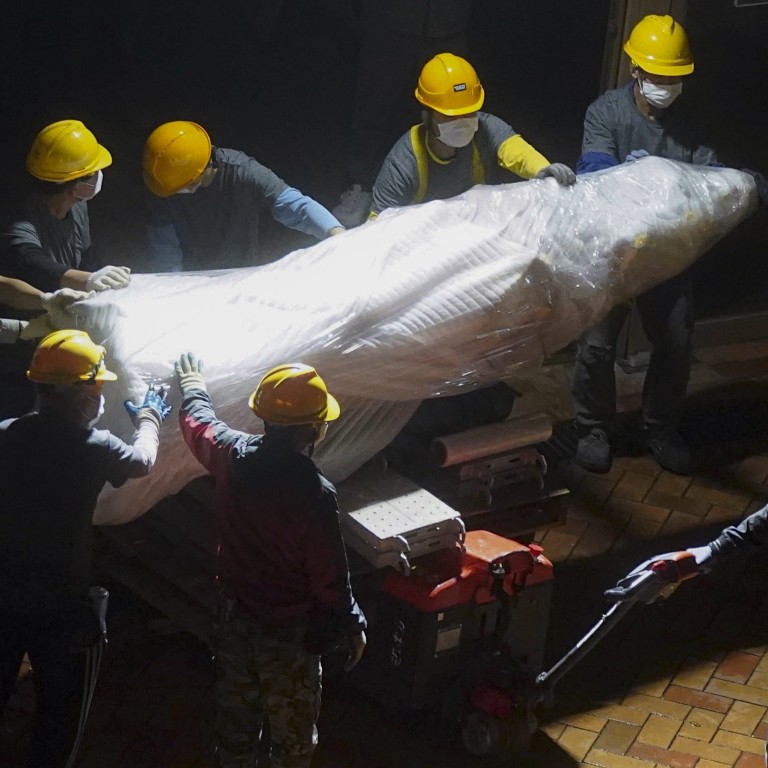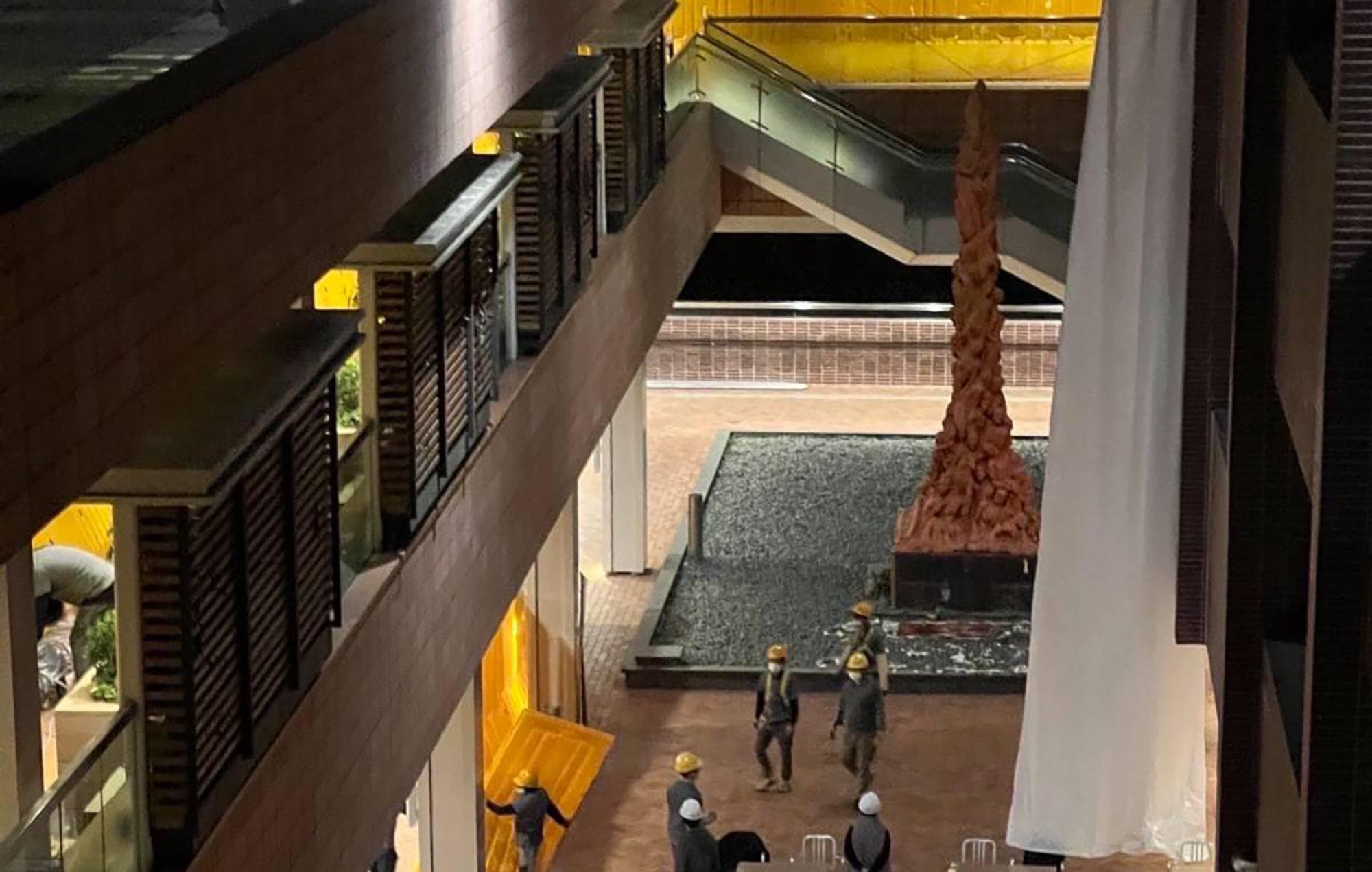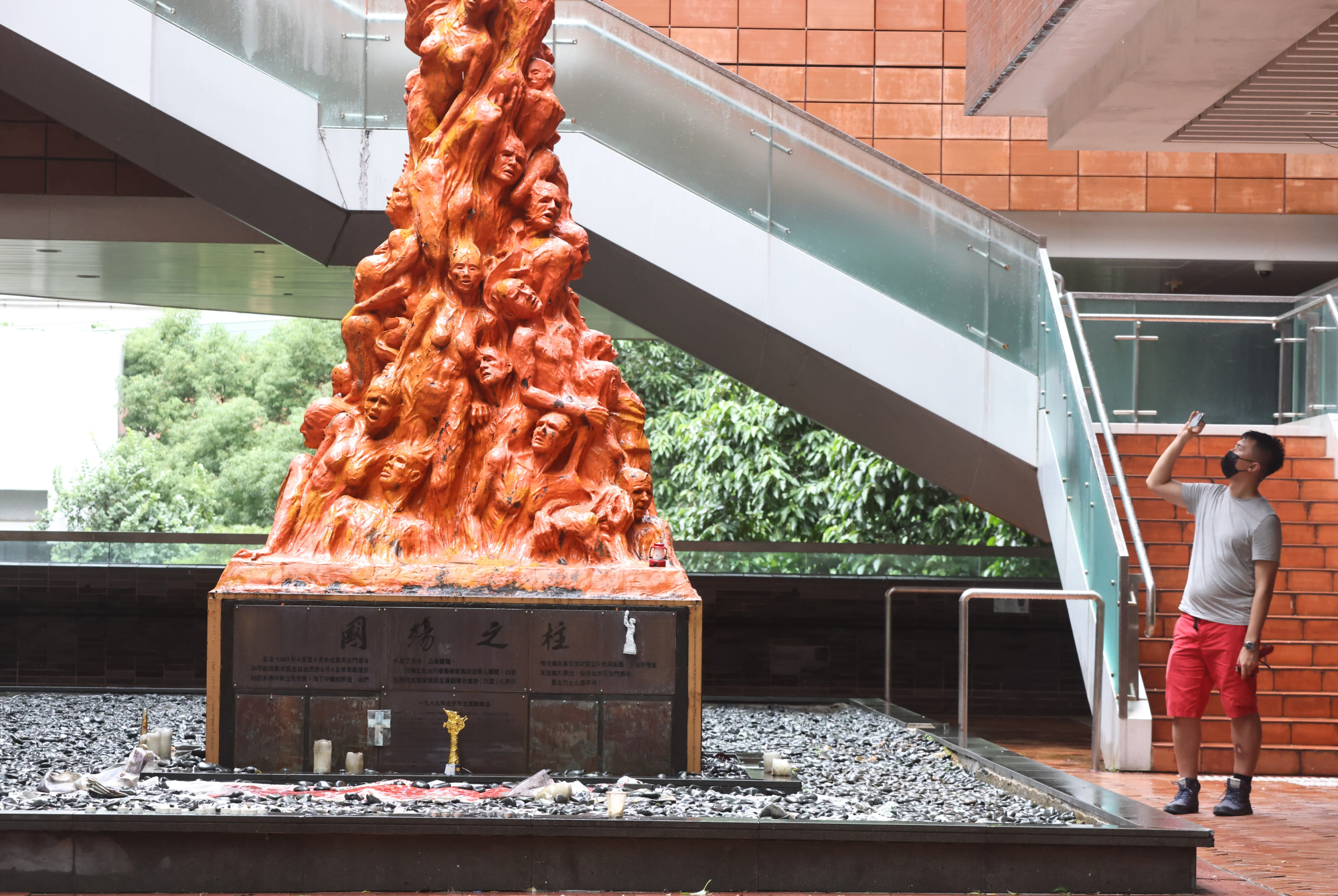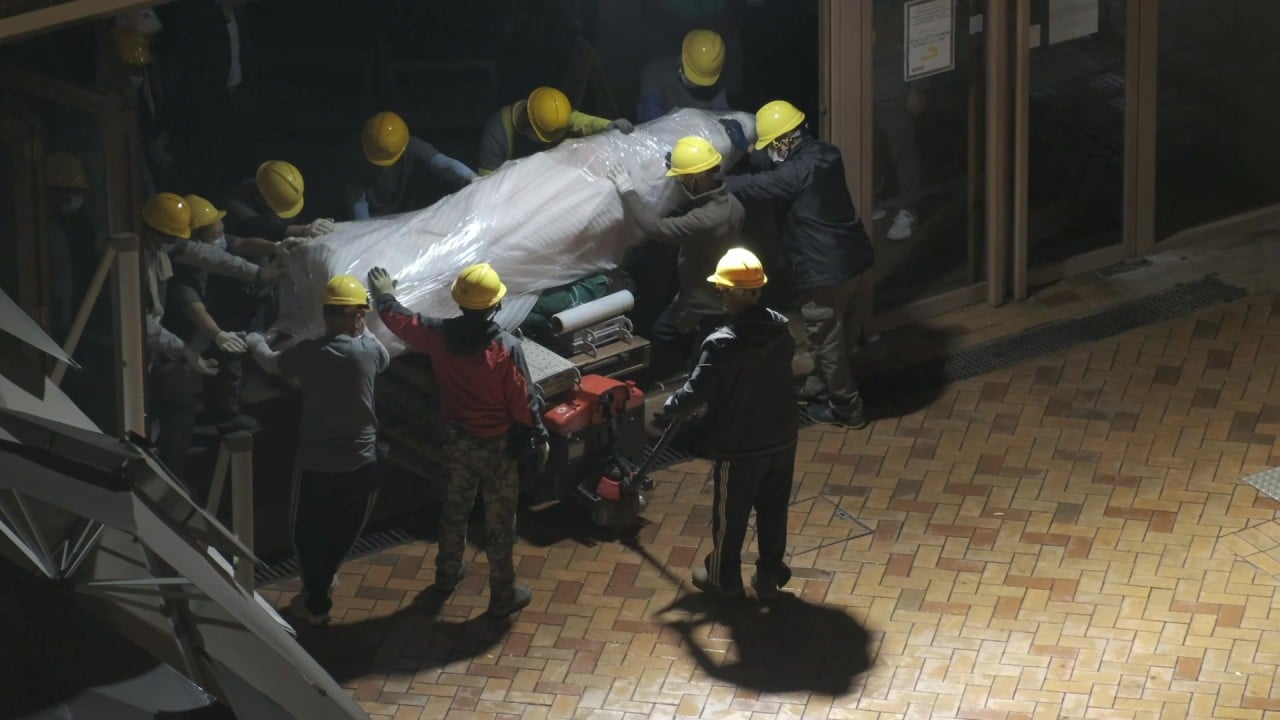
University of Hong Kong removes Pillar of Shame sculpture marking Tiananmen Square crackdown in middle of night
- While an HKU Council statement points only to unspecified ‘legal risks’, source says colonial-era sedition law was cited during meeting that lasted over an hour
- Danish artist Jens Galschiøt, the pillar’s creator, blasts its dismantling as ‘a disgrace’, says university refused to communicate with him despite offers to claim it
The HKU Council, a partially government-appointed body, confirmed the removal in a morning statement, saying the decision to take down the eight-metre Pillar of Shame was made in light of “external legal advice and risk assessment” after a meeting on Wednesday.
“Latest legal advice given to the university cautioned that the continued display of the statue would pose legal risks … based on the Crimes Ordinance enacted under the Hong Kong colonial government,” the statement said.
The council also said it was “very concerned about the potential safety issues resulting from the fragile statue” and noted that no official approval had ever been granted for its display. It had stood on campus since June 1997.
While the statement offered no specifics as to the potential legal risks, a source familiar with the council’s discussion said Section 10 of the Crimes Ordinance had been cited as a basis for removing the statue.
The section targets acts with a seditious intention, including publications and displays of any seditious material, deemed a crime punishable by up to two years in prison and a HK$5,000 (US$641) fine for a first offence.
According to the source, the university had sought legal advice from local law firm P.C. Woo & Co after Chicago-based Mayer Brown declined to represent HKU on the matter amid criticism of HKU’s initial decision in October. The Post has approached the firm for comment.
Wednesday’s council meeting, which saw the topic discussed for more than an hour, ended with a large majority of members – most of whom are external stakeholders – voting for the statue’s removal.

The source said the statue would be kept in storage, and HKU would, to the degree permitted by law, provide logistical support so the owner could take it back. According to local media reports, the pillar is now being kept at HKU’s Kadoorie Centre in Yuen Long, about 30km from the campus.
Legal scholar Eric Cheung Tat-ming said he could not see the rationale for citing Section 10 of the Crimes Ordinance to remove the pillar.
“The section has existed for a very long time and the statue was erected at HKU for years. Why did they not think the display had a [seditious] intention in the past, while suddenly they think it will violate the law?” Cheung said.
Wong Ching-hin, an elected council representative for undergraduates, said he was surprised HKU had removed the pillar right after Wednesday’s meeting, expressing profound regret over how it had handled the situation.
“The pillar … is a symbol of the truth that was removed overnight,” he said.
Hong Kong tycoon Jimmy Lai, 7 others jailed over banned Tiananmen vigil
On Sunday, Li, who along with several other council members was appointed by the city’s chief executive, said the university had faced difficulties in handling the pillar and was still trying to clarify who owned it.
But the statue’s creator, Danish artist Jens Galschiøt, on Thursday called the pillar his “personal property” and said the university, which he accused of “destroying” the sculpture, had ignored his offer to travel to Hong Kong to remove it.
“[HKU] will not talk to me,” he said in a statement. “Countries around the world have offered to receive the Pillar of Shame, and the Danish foreign minister has offered his help – but there has been no response from [HKU] or other responsible authorities.”
He added: “It is my private property and the sculpture belongs to me personally … I will claim compensation for any damage to the sculpture.
“It is a disgrace and an abuse and shows that Hong Kong has become a brutal place without laws and regulations such as protecting the population, the arts and private property.
“And it’s even more grotesque that they use the Western holiday Christmas to carry out the destruction of the artwork.”

The statue was surrounded by huge white curtains and yellow plastic hoardings at about 10.15pm on Wednesday, according to the “Undergrad HKUSU Instant News” Facebook page.
It was then dismantled in parts and wrapped in white cloth at about 3am. The pieces were placed in a container truck, which left the campus at about 6.50am, the HKU student publication’s page reported.
Workers in safety helmets were seen around the sculpture, while a mobile crane stood by. Shovelling and digging noises could be heard coming from behind the curtains.
Artist seeks diplomatic help to relocate Tiananmen statue overseas
The sculpture is a memorial to the victims of the June 4, 1989 Tiananmen Square crackdown in Beijing.
It was erected in HKU in June 1997 after the annual Tiananmen candlelight vigil was held in Victoria Park. That night, hundreds of students and protesters gathered at the university to demand they be allowed to put up the sculpture on campus.
The statue was then sent for display at different universities, returning to HKU in 1999 after the vigil that year, with support from its student union. HKU management did not take action to remove it although they previously threatened to do so.
HKU ordered the pillar’s removal in October, saying its decision was based on an assessment of legal risks in light of the recent disbandment of the alliance amid a national security investigation.
While the university said the Pillar of Shame was owned by the alliance, Galschiøt argued that the sculpture was only on permanent loan to the group in the absence of any purchase contract, and that, in principle, it belonged to him.






